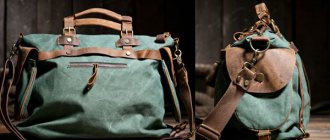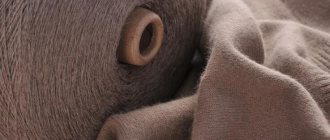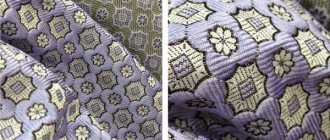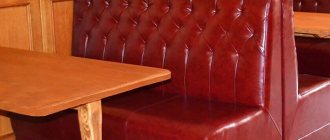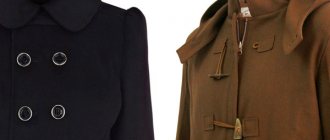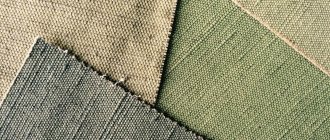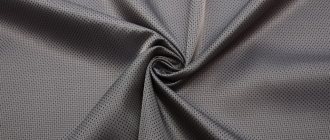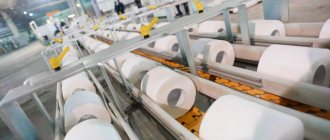What is cloth?
The main raw material for the production of cloth fabrics is wool, and, a little less often, mixed fibers. High-grade raw materials are obtained from merino yarn. The production technology owes its uniqueness to the dense weave of the threads.
Cloth of different shades
Cloth fleece goes through several stages of processing. It is sorted, washed and sorted. Then comes the combing process - the fleece is passed through scattering mechanisms. Then it’s time for felting using a spinning machine. Washing and dyeing separates the fabric from the finished product. The processed fiber is cut, cleaned and pressed.
Merino wool
Material properties and care rules: merino wool fabric
more details
Description
The material has a homogeneous structure; its characteristic features are hairiness and roughness. The main feature is considered to be a rough texture, a tangled upper layer that overlaps the fiber. Because of this, the fabric visually resembles felt. The choice of shades is quite wide, the material can be easily painted.
What is cloth made of, what does wool fiber look like?
Sheep and camel wool are used as raw materials in production; mixed fibers are used less frequently.
High quality varieties are produced from merino yarn, the main feature of which is its length, it reaches 7-8 cm.
Cloth can be natural or synthetic. The most valuable is considered to be 100% wool fabric made from camel and merino wool. This category includes wool and wool-blend materials with felt flooring.
Classic cloth is heavy, dense wool with a fleecy surface. The twill weaving method is used in production.
Properties and quality, density
The demand for the material is explained by its characteristics, which allow it to be used in various fields. Cloth items look great and are suitable for everyday use. Read about the composition and description of dalgych fabric at this link. Basic properties:
- high spreading ability - achieved due to the rough structure;
- thermal insulation properties, protected from cold air;
- strength;
- durability;
- resistance to pollution;
- breathability;
- resistance to processing, retention of shape when cutting, absence of distortions.
The items do not require special care, they are easy to clean, all types of fabrics, with the exception of thick and synthetic ones, can be ironed.
The following types of material are distinguished by density:
- thin;
- semi-rough;
- rude.
The relative density of the base reaches 45-70%. The surface distribution of fibers is 320-450 g/m2; for workwear, this characteristic is 555 g/m2, and sometimes 870 g/m2.
Origin story
Scientists and archaeologists have recorded that the first devices for making cloth began to appear even before our era in nomadic ancient tribes. Full-fledged hand-made production of cloth goods became popular during the heyday of the Roman Empire. The Middle Ages, which marked the growth of manufacturing, launched mechanical production in France and England.
In Ancient Rus', the material looked rough due to the density of the material, which was woven for sale at fairs to boyars and foreign merchants. There were more problems with thin types - they were imported from abroad.
Cloth production on a large scale was implemented through the efforts of Peter I, who himself did not hesitate to wear cloth caftans. At the beginning of the 18th century, the entire army was packed in warm and comfortable cloth caftans.
Fabric composition and its properties
Despite the long existence, the composition of the fabric has not changed much. A mandatory component used in production is wool or mixed raw materials.
The composition of artificial fabrics includes mixed yarn and cotton thread. The percentage of raw materials in these fabrics is 50-70%.
Catalog of other artificial fabrics
Material properties:
- heat conservation and protection from cold;
- strength;
- density;
- practicality;
- durability;
- breathability and hygiene;
- cloth products, except very dense and synthetic ones, can be ironed.
Types and their properties
The material varies in purpose, density, properties, manufacturing technology. The following types of wool fabric are known:
- Coarse wool - known as homespun cloth, it is also coarse and undyed cloth. The very name “semiryaga” is considered obsolete. Modern thick cloth is suitable for outerwear and protective products;
- drying cloth - a material for industrial purposes, used in the manufacture of paper to absorb excess moisture, which speeds up production;
- pipe cloth is a special-purpose technical fabric. It has a natural color, is not processed, but comes without defects in appearance;
- ruffled cloth - fabric where the surface has a characteristic relief - patterned or figured, which is achieved by ratification;
- beaver - dense cloth with standing pile, is heavy, but can also be lightweight;
- filter cloth – a technical variety with a mixed composition. The wool content in this form reaches 40%. Used primarily for air purification;
- instrument cloth - found application in the production of departmental clothing. Stripes and chevrons are made from it. Options with low density can be considered as footcloth. The cuts used in the manufacture of uniforms are produced in a practical range - usually in gray, but black, dark blue, and marsh cloth are also found;
- drape is a thick woolen variety that is used for sewing outerwear - coats, jackets. Thin types of drape are often combined with other materials - leather, satin and even silk, which allows you to get interesting combinations;
- Cheviot is a dense but thin cloth with a pile, obtained by twill weaving. The small thickness of the material allows it to be used to make casual clothing, as well as military equipment;
- Bieber – otherwise polished velor. This is a synthetic imitation that is used for furniture upholstery, along with jacquard and gabardine;
- dradedam - known as ladies' cloth, it is soft, light, reminiscent of fleece. Available in light colors. White cloth and pastel wool options are suitable for making hats, shawls, and scarves. Ladies' fabrics are in demand by the fashion industry no less than chiffon or staples;
- billiard fabric is traditionally green cloth with a soft, uniform surface. Cuts for upholstering furniture are resistant to abrasion;
- overcoat variety - material with the addition of nylon, has low creasing. It is used for sewing uniforms, as upholstery material, and can also be used as hat cloth.
Types of cloth
By density:
- Thin - pile flooring falls off very quickly;
- Semi-rough - medium thickness, will last longer in wear;
- Rough - the production of the material requires energy costs, which are compensated by the quality of the finished product.
By purpose:
- Army. The fabric contains only natural wool raw materials. It acquired its name due to the use of fabric in sewing military uniforms. Characterized by increased density, retention of heat generated by the human body.
- Everyday. Various technologies are used in the production of cloth. It is characterized by a wide range of colors and softness of the pile. Using this type of cloth, clothes are created:
Types of cloth fabrics
Based on density, cloth fabrics are divided into thin, semi-coarse and coarse.
- Thin ones have a low density and are characterized by a strong fall of pile flooring.
- Rough. Thick yarn is used as raw material. The product is characterized by high density. This cloth is the most difficult to sew.
- Semi-rough ones occupy an intermediate position. They have a medium weave density.
Depending on the purpose, cloth fabrics are called general's, officer's, sailor's, overcoat, footcloths, hats, suits, coats... There is also billiard cloth and technical products.
Natural wool cloth is divided into two large groups. They have some differences in manufacturing.
Army
It is created according to strict rules that do not tolerate any deviations from technology. It is used to make overcoats, uniforms and trousers for the military.
- Products for soldiers and officers differ in the quality of wool, processing and different characteristics. These are plain-dyed fabrics of varying densities and pile lengths. Castor cloth is considered the most expensive. It has a steel-colored satin finish. General's ceremonial overcoats are made from this fabric.
- Winter cloth, which is looser and warmer, differs from the thinner and lighter summer cloth.
- Overcoat cloth is also used in the working environment. It is not afraid of sparks, can withstand high temperatures and can serve as a reliable barrier against dangerous compounds. Clothes and gloves for metallurgists are made from it, and it is used in chemical and mechanical engineering industries.
- The material is also very popular among hunters. Clothes made from it keep you warm in bad weather and allow you to warm yourself by the fire. In addition, it retains the elusive smell of sheep fat, which only a predator can smell.
On a note
To sew the dress uniform of generals, they use castor cloth , which in its characteristics is radically different from the fabric for an overcoat. It is no coincidence that this is the most expensive fabric in this category.
Urban
This cloth can be made using slightly different technology. It is softer and thinner than the army one, and is characterized by a large variety of colors.
- Plain-dyed and melange suits and coats are made from this type of fabric.
- Elasticity and the ability to create plastic forms have found application in the fashion industry. Wool fabric makes magnificent capes-capes with beautifully flowing tails.
- Urban material includes special cloth for billiard tables. It is very soft and pleasant to the touch. All surface fibers are smoothed in one direction.
Artificial cloth is used mainly as a technical fabric. It is used, in particular, in the manufacture of paper. The pads absorb excess moisture.
What purposes can this fabric be used for?
Application area:
Industry – in paper production, artificial felt removes moisture from the press. Filtered cloth is used to purify the air.
Fashion is the finest cloth, suitable for lining or cape. Hats, bags, scarves are made from cloth.
Clothing: pullovers, suits, jackets, coats, ponchos.
Footwear: felt boots, boots, house slippers.
Sleeping accessories.
Covering for billiard tables.
How much does the fabric sell for?
The cost of cloth depends on its type and how the material is used. Prices for everyday cloth range from 1 thousand to 6-7 thousand rubles per 1.5 m. It all depends on the naturalness of the fabric and its density.
The price of industrial cloth is much less - within 1 thousand rubles. for 1.5 m. Billiard cloth is sold for 3-4 thousand rubles for 1.5 m.
Cloth products are popular in Russia, they are in great demand. This demand is not accidental; the product obtained from this raw material has no analogues. In severe frosts typical of the Russian climate, cloth clothing is the best option.
Advantages of broadcloth fabric
Broadcloth is a high-quality fabric that has many advantages and benefits. The exquisite and delightful appearance of the products looks great and goes with almost any style of clothing. The material is designed for everyday use, it is a very practical and wear-resistant fabric, great for sewing coats and other outerwear. In addition, cloth has other advantages:
- high levels of breathability (thus, when worn, the human body does not sweat, the material provides increased comfort)
- cloth - quality guarantee against wind and frost
- the material is quite resistant to dirt, which has a positive effect on operation
- the fabric does not accumulate odors
- cloth is not a fancy material; if treated correctly and with care, the products will not change their appearance for many years
- This fabric is easy to process and is perfect for the production of outerwear
- cloth is a durable fabric: high quality and reliability ensure a long service life

